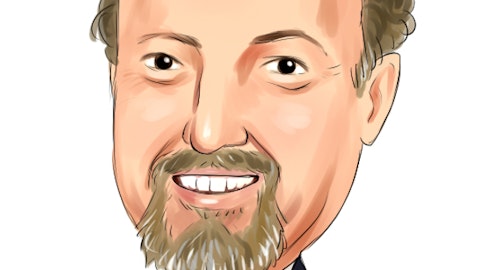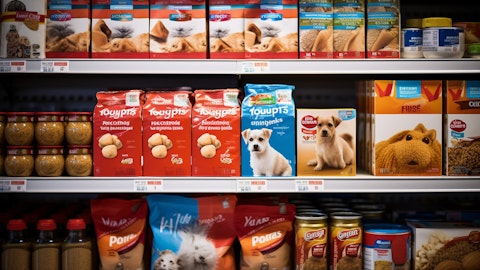Dylan Carden: Appreciate it. Sumit, back to that kind of cohort analysis on the churn side, I wonder if you could kind of speak to it on the NSPAC side. And I guess the broad question would be how relevant some of your historic cohort spending metrics are? And just whether or not there’s any impact from higher levels of Autoship if those customers kind of set it and forget it and don’t yield up in the same fashion because they don’t visit the site with the same frequency? Any detail there would be helpful. Thanks.
Sumit Singh: Yes. So the NSPAC side of the house will be continued to be driven by both the health as well as participation in Autoship. Those are the two primary drivers of NSPAC expansion that we see in 2024. And the, so those are the pluses. The minuses are obviously you don’t get the pricing benefit in NSPAC that you saw last year. So if you average out NSPAC benefit over the last four years, we essentially have 80% of the NSPAC growth that came since the time of the IPO in 2019. On the back of organic work that the team has done, right, improvement in Autoship, improvement in health, launch of pharmacy, growth in the supplements business, etcetera, etcetera. And 20% or less has come from inflation. But if you look at last year, right, the weight on inflation was higher as NSPAC kind of grew.
So, this year we’re not expecting, this year as in ‘24, we’re not expecting the impact of pricing or inflation in this. And so NSPAC is going to grow on the back of pure Autoship and health. On the health side, if you look at cohort analysis, we’re likely going to add north of 1 million customers to pharmacy and that is a direct expansion of NSPAC in addition to the usual subscription rate growth that we will drive towards in the Autoship business. So, those two will be a combination. We just don’t get any pricing benefit this year.
Dylan Carden: Got it. Thank you.
Operator: Our next question comes from Anna Andreeva with Needham and Company. Your line is open. Please go ahead.
Anna Andreeva: Great. Thanks so much for taking our questions. We have two. On the adjusted EBITDA, I think the guide implies slightly less than the 15% incremental margins you guys outlined during the Analyst Day. And you mentioned the guide does imply some OpEx leverage. So, should we expect more muted gross margin gains for the year? Just any color there would be super helpful. And then secondly, CapEx, as you mentioned, came in a little lower, than the guide for ’23. Should we expect it to stay at similar 1.3% of sales or below for ‘24? Any thoughts on initiating a buyback, just given this ramping free cash flow generation? Thanks so much.
David Reeder: Sure. Hi, Anna. Let me take that one and let me speak a little bit more broadly perhaps and philosophically about profitability first. We outlined at Capital Markets Day our philosophy and our path to 10% EBITDA margin and the corresponding free cash flow that would of course come from that. And so, when we think about profitability within 2024, we are expecting to get leverage not only on the gross margin line, but also on the operating expense line as well. And specifically within gross margin, let me call out a few areas. Given our infrastructure and the fact that it’s reached critical mass, we’re actually able to flow through incremental volume at a much higher accretive rate for the company. So, as we get more volume given the infrastructure we’ve built out, we have moderated CapEx on a go forward basis.
The fall through is higher for that incremental volume fixed cost absorption, if you will. In addition to that, we also have product mix. So, we’re mixing up from a product perspective as we continue to grow into healthcare, into pharmacy, that also averages up or accretes up our gross margin. And then finally, within the gross margin line, we also have sponsored ads that we’ve already spoken about a little bit. We expect sponsored ads. We ramped those in the fourth quarter. We expect continue to grow those quarter-to-quarter-to-quarter sequentially throughout 2024. And so, that’s the accretion that we expect to occur on the gross margin line. With respect to OpEx, we are making some investments on the OpEx side. We expect our core OpEx to continue to scale.
But then, of course, we’re thoughtfully entering Canada as we expand into Toronto, and of course, we’re also investing in our long-term initiatives around vet care. And so, the rate and pace of those investments will be thoughtfully managed as we proceed throughout the year, but we’re expecting to get benefits and profitability from both gross margin as well as OpEx. On the CapEx side of the house, we’ve guided long term 1.5 points to 2 points of net sales. You’re correct last year in 2023 we were slightly below that. I think a good midpoint would be take the midpoint of that guidance between 1.5% and 2% and think about the midpoint of the guidance we’ve given you on the topline, that will put you in a good spot from a capital expenditures perspective.




